
Home - Search - Browse - Alphabetic Index: 0- 1- 2- 3- 4- 5- 6- 7- 8- 9
A- B- C- D- E- F- G- H- I- J- K- L- M- N- O- P- Q- R- S- T- U- V- W- X- Y- Z
ICBM
Intercontinental ballistic missile
Subtopics
 |
G-5 Russian intercontinental ballistic missile. Some sources indicate the G-5 / R-15 designation was assigned to an ICBM designed by the Groettrup team. If so, it may have been the 'packet of G-4's' that was the direct ancestor of the Korolev R-7. The designation G-5 / R-15 has also been reported as that of the ramjet missile more often referred to as G-3 or R-13. |
| T-1 Original conceptual design for ICBM. Final design was R-7 due to unachievability of mass ratio for this single stage design. Data from chart at Russian Space Agency HQ. |
 |
Titan I American intercontinental ballistic missile. ICBM, built as back-up to Atlas, using two stages instead of one and a half, and conventional tank construction in lieu of balloon tanks. It was also to have been used for suborbital tests of the X-20A Dynasoar manned space plane. For unknown reasons never refurbished for use as space launcher and scrapped after being replaced by the Titan II in the missile role in mid-1960's. |
| LGM-30C American intercontinental ballistic missile. Mobile version of Minuteman. Development begun in 1955. Cancelled in 1962. |
| R-8 Russian intercontinental ballistic missile. Glushko project 1956 for multistage 650t ICBM powered by LOx/UDMH. |
 |
R-7A Russian intercontinental ballistic missile. The R-7A was an improved version of the R-7 first ICBM, and the one actually deployed to pads in Baikonur and Plesetsk. The missile saw service from 1960 to 1968. Four pads at Plesetsk, and one reserve pad at Baikonur, were operational at the peak of deployment in 1962. These were the Soviet Union's only strategic missile deterrent during the Cuban Missile Crisis. |
 |
R-7 Russian intercontinental ballistic missile and launch vehicle series. The world's first ICBM and first orbital launch vehicle. The original 8K71 version was never actually put into military service, being succeeded by the R-7A 8K74.The world's first ICBM became the most often used and most reliable launch vehicle in history. The original core+four strap-on booster missile had a small third stage added to produce the Vostok launch vehicle, with a payload of 5 metric tons. Addition of a larger third stage produced the Voskhod/Soyuz vehicle, with a payload over 6 metric tons. Using this with a fourth stage, the resulting Molniya booster placed communications satellites and early lunar and planetary probes in higher energy trajectories. By the year 2000 over 1,628 had been launched with an unmatched success rate of 97.5% for production models. Improved models providing commercial launch services for international customers entered service in the new millennium, and a new launch pad at Kourou was to be inaugurated in 2009. It appeared that the R-7 could easily still be in service 70 years after its first launch. |
 |
Sputnik 8K71PS Russian intercontinental ballistic orbital launch vehicle. Relatively unmodified R-7 ICBM test vehicles used to launch first two Sputniks. |
 |
Sputnik 8A91 Russian intercontinental ballistic orbital launch vehicle. Modified R-7 ICBM used to launch Sputnik 3. |
 |
Titan II American intercontinental ballistic missile. ICBM, developed also as the launch vehicle for the manned Gemini spacecraft in the early 1960's. When the ICBM's were retired in the 1980's they were refurbished and a new series of launches began. |
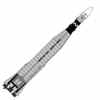 |
Atlas D American intercontinental ballistic missile. Rocket used both as a space launcher and ICBM. |
 |
Atlas E American intercontinental ballistic missile. Initial fully operational version of Atlas ICBM. Differed in guidance system from Atlas F. Deployed as missiles from 1960 to 1966. After retirement, the ICBM's were refurbished and used over twenty years as space launch vehicles. |
 |
Minuteman American intercontinental ballistic missile. Mainstay of the US deterrent. 1,000 Minuteman silos were built in the early 1960's, and the missile was to remain in service to the mid-21st Century. As versions were retired and updated, they provided a plentiful source of surplus rocket motors for other projects, notably targets for anti-ballistic missile tests. |
| Minuteman 1A American intercontinental ballistic missile. Initial production version, 3 stage vehicle. The Minuteman IA used exclusively the Mk.5 RV with the W59 (1 MT) warhead. |
| OKB-456 Russian intercontinental range ballistic missile. Variant using a Glushko nuclear engine heating ammonia as a propellant. |
| OKB-670 Russian intercontinental range ballistic missile. Variant using a Bondaryuk nuclear engine heating mixed alcohol and ammonia as a propellant. |
| Minuteman 1A T American intercontinental ballistic missile. Single stage test vehicle. |
 |
GR-1 Russian intercontinental ballistic missile. Korolev's entry in the 'Global Rocket' competition, a missile that could place a nuclear warhead in orbit, where it could come in under or behind American anti-ballistic missile defenses, and be deorbited with little warning. Cancelled in 1964 in preference to Yangel's R-36-O. |
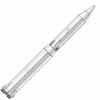 |
R-16 Ukrainian intercontinental ballistic missile. The Soviet Union's first practical ICBM, a two stage vehicle using storable propellants. Development began in 1956 and the missile was in service from 1962 to 1974. Peak deployment consisted of 186 launchers, about a third of them in missile silos, the rest in fixed 'soft' installations. |
| Atlas F HGM-16F American intercontinental ballistic missile. ICBM version. Also CGM-16F |
| Tselina-2 ICBM Ukrainian intercontinental ballistic missile. Development of the Tselina-2 road transport for a heavy ICBM can be traced back to the late 1960's. By the 1970's two versions had been designed, the 12-axle MAZ-7906 and 8-axle MAZ-7907. They could transport loads of up to 140 metric tons, much greater than the single-warhead RT-23 and its container. Although trials of prototypes were conducted in the 1980's, the road mobile version of the RT-23 was never put into service. |
 |
YaRD ICBM Russian intercontinental range ballistic missile. Single-stage nuclear-powered ICBM designed by Korolev's OKB-1 in 1958-1959. Two ICBM variants were considered, using nuclear thermal engines designed by Glushko's OKB-456 and Bondaryuk's OKB-670. A third design under the same resolution was the Yakhr-2 space launcher, and the later Superraket N1 progenitor used the same engines. All used nuclear reactor engine modules in cylindrical housings, operating at 3000 - 3500 deg K. |
 |
Romashka Russian intercontinental ballistic missile. Pad-launched version. |
 |
Atlas F American intercontinental ballistic missile. Final operational version of Atlas ICBM. Differed in guidance systems. Deployed as missiles from 1961 to 1966. After retirement, the ICBM's were refurbished and used for over thirty years as space launch vehicles. |
| MR Russian intercontinental ballistic missile. Korolev studied this Multimodular Rocket (MR), based on stages already designed for the 8K74 and 8K77 (R-7 and R-9) missiles. As was the case of the 8K74, work on the design was stopped in September 1961. |
 |
R-16U Ukrainian intercontinental ballistic missile. Standardized version of R-16, for either pad or silo launch. |
| 8K73 Russian ballistic missile. Korolev project. Probably designation for intercontinental ballistic missile variant of his GR-1 global rocket. |
| 8K713 Article Number of intercontinental ballistic missile version of the GR-1 global rocket. Article number sometimes erroneously given as 8K73. |
| 8K76 Russian intercontinental ballistic missile. Version using storable propellants and Isayev engines. Studied but rejected prior to start of development. |
 |
8K77 Russian intercontinental ballistic missile. Version with vacuum-isolated liquid oxygen tanks to provide capability to hold ready for instant launch. Studied but never developed. |
| 8K711 Russian ballistic missile. Korolev project. No other information available. |
| R-9M Russian intercontinental ballistic missile. Improved version with Kuznetsov engines in first and second stages. Development undertaken, but cancelled in favor of basic version with RD-111/RD-0106 engines. |
| MBR Russian intercontinental ballistic missile. 'Sealed unit' liquid propellant ICBM proposed by Reshetnev in 1960. |
 |
R-56 Polyblock ICBM Ukrainian intercontinental ballistic missile. TsNIIMash has 1:10 structural simulation model. Three stage carrier rocket with consecutive first and parallel second stages. Range indicated on placard; possibly considered as monster ICBM in competition with UR-500. Work began in 1961. |
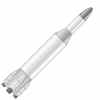 |
DF-3 Tsien Development of the original DF-3 10,000 km missile was undertaken personally by Tsien Hue Shen, the father of Chinese rocketry, but faced insurmountable technical and management difficulties. It was cancelled and replaced by the DF-4. |
 |
R-9A Russian intercontinental ballistic missile. ICBM developed by Korolev OKB using liquid oxygen/kerosene propellants. The Soviet military favored storable propellants as advocated by Glushko and implemented by Yangel and Chelomei. Development of the R-9 was protracted and it was deployed in only very limited numbers between 1964 and 1974. |
| Minuteman 1B American intercontinental ballistic missile. Full production version. Minuteman IB used the Mk.5 RV with the W59 (1 MT), the Mk.11 with the W56 (1.2 MT) and the Mk.11A with the W56 as well. |
| Midgetman American intercontinental ballistic missile. Early 1960's two-stage version of Minuteman. |
| R-38 Russian intercontinental ballistic missile. Small, economical ICBM studied by Yangel as an alternative to Chelomei's UR-100. Both one and two stage variants were considered. Work ended when Yangel was ordered to concentrate on R-36. |
| 64S5 Ukrainian intercontinental ballistic missile. Space launch version, never went beyond design stage. |
 |
R-26 Ukrainian intercontinental ballistic missile. Two stage light ICBM developed 1960-1962, but cancelled so that Yangel could concentrate his efforts on the R-36. After project cancellation, a mock-up of this missile was shown in Moscow parades and misidentified for years by Western analysts as the 'SS-8'. |
| Desna Russian intercontinental ballistic missile. Silo-launched version, silo hardened to 15-30 atmospheres overpressure. |
 |
R-36 8K67 Ukrainian intercontinental ballistic missile. Initial ICBM version. |
 |
UR-200 Russian intercontinental ballistic missile. Universal rocket designed by Chelomei to cover the ICBM, FOBS, satellite launch vehicle, and spaceplane booster roles. Flight tested in 1963-1964 but cancelled in favour of Yangel's R-36. |
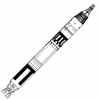 |
Titan II GLV American intercontinental ballistic orbital launch vehicle. Version for launch of Gemini manned spacecraft. Developed in parallel with ICBM version. Differed in having redundancy features in systems and MDS (Malfunction Detection System) installed. |
 |
Minuteman 2 American intercontinental ballistic missile. US ICBM. 3 stage vehicle. The LGM-30F Minuteman II used the W56 warhead exclusively with either the Mk. 11B or Mk. 11C re-entry vehicle. |
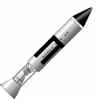 |
Ares ICBM American intercontinental ballistic missile. The Ares single-stage, liquid-propellant ICBM was the objective of propulsion studies at both Aerojet and Rocketdyne. |
 |
Dolina Russian intercontinental ballistic missile. Alternate silo-launched version, silo hardened to 15-30 atmospheres overpressure. |
| UR-100M SLBM Russian intercontinental ballistic missile. The UR-100M designation was used for a naval version of the UR-100, developed by Chelomei in 1962-1964. This would fit in the Navy's D-8 launch system. It was rejected in favour of the R-29 from Makeyev, who became the Navy's traditional supplier of SLBM's. |
| Temp-S.2M Russian intercontinental ballistic missile. The Temp-S.2M was the first strategic rocket designed by A D Nadiradze at NII-1. The design was abandoned when weight growth made it too heavy for the planned mobile transport. |
 |
UR-100 Russian intercontinental ballistic missile. The UR-100 lightweight ICBM was the Soviet answer to the US Minuteman and was deployed in larger numbers than any other in history. It remained an enigma outside of intelligence circles in the West until after the collapse of the Soviet Union. It allowed the Soviet Union to match, and then surpass the United States in strategic deterrent capability. As such it was Vladimir Chelomei's crowning legacy to his country. |
| Tsiklon Ukrainian orbital launch vehicle. On 16 March and 1 August 1961 the Central Committee and Politburo approved development of Chelomei�s UR-200 (8K81) universal rocket. The UR-200 was to orbit Chelomei�s IS (Istrebitel Sputnik) ASAT; the US (Upravlenniye Sputnik) nuclear-powered naval intelligence satellite; and the Raketoplan combat re-entry vehicle. Trial flights of the missile began on 4 November 1963.On October 13, 1964, Khrushchev was ousted from power. The new leadership, under Brezhnev, was adverse to all projects Khrushchev had supported. These included those of Chelomei. An expert commission under M V Keldysh was directed to examine all of Chelomei�s projects and make recommendations as to which should be cancelled. Keldysh found that Yangel�s R-36 rocket was superior to Chelomei�s UR-200 and that the Raketoplan was technically overly ambitious. The UR-200 and Raketoplan were accordingly cancelled, while the IS and US satellites were redesigned for launch by the R-36.A government decree of 24 August 1965 formalised the decision and the Yangel bureau began design work in 1966. Required modifications to the R-36 were minimal; the IS and US Raketoplan-derived payloads had their own engines for insertion into final orbit. The Tsyklon 11K67 first test version was an adaptation of the 8K67 (SS-9 Mod 1) two stage ICBM and flew only briefly (1967 to 1968). It was quickly replaced by the definitive 11K69 Tsyklon 2 launch vehicle. The military project manager was L A Dolnikov. |
 |
Gnom Russian intercontinental ballistic missile. Gnom was a unique design which represented the most advanced work ever undertaken on an air-augmented missile capable of intercontinental ranges or orbital flight. Although cancelled in 1965 before flight tests could begin, Gnom was the closest the world aerospace engineering community ever came to fielding an orbital-capable launcher of less than half of the mass of conventional designs. |
 |
RT-2 Development of the RT-2, the Soviet Union's first solid propellant ICBM, was undertaken by Sergei Korolev and his successor from 1961-1968. It was a huge technical challenge, involving technology in which the Russians had no prior experience. The high-priority RT-2 preoccupied Korolev and his team throughout the period of the moon race, and could be considered a factor in the loss of that race to the Americans. In the end only sixty were deployed, but these provided the technical basis for Russian ballistic missiles of the 1980's and beyond. |
| RT-21 Russian intercontinental ballistic missile. Project work began in 1963 on this three-stage solid propellant ICBM. Five train-launched variants were studied, as well as a silo-launched version. Studies were completed in 1966 but it was decided not to proceed with the concept. |
 |
R-46 Ukrainian intercontinental ballistic missile. Super-heavy ICBM designed by Yangel in 1963-1966. The original R-56 super-booster concept consisted of clustered R-46's. |
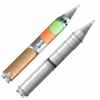 |
RT-20P Ukrainian intercontinental ballistic missile. Following the protracted development of Shavyrin's Gnom air-augmented ICBM, it was decided to let Yangel tackle the problem of developing a 30 metric ton gross mass ICBM using more conventional technology. At first a three-stage solid propellant design was considered. But it was found impossible to achieve the launch weight with such an approach. Yangel's solution was to propose the only mixed propulsion ICBM ever developed - a solid propellant first stage, and high performance ampulized storable liquid propellant second stage. The draft project for the missile was completed in December 1964 and a decree to proceed with development was issued on 24 August 1965. Shortly thereafter Shavyrin died and Gnom was cancelled, leaving Yangel's RT-20P the lead project for the mobile ICBM requirement. Designs for silo-launched and submarine-launched versions of the missile were to be developed as well. |
| AICBM Advanced Intercontinental Ballistic Missile, a planned 1966 successor to the Minuteman. Cancelled in 1967, with the Minuteman also outlasting such competitors as the Peacekeeper and SICBM, to remain in service to the mid-21st Century. |
| R-36 8K67M Ukrainian intercontinental ballistic missile. |
 |
Minuteman 3 American four-stage solid-propellant intercontinental ballistic missile. In the 21st Century, the sole remaining US ICBM. |
| R-36 8K67P Ukrainian intercontinental ballistic missile. The R-36P was a version of the R-36 which could deploy three separate (but not independently-targeted) warheads instead of one. The concept was to ensure a wider zone of destruction and overpressure then a single warhead detonation would create. |
| UR-100K Russian intercontinental ballistic missile. The UR-100K was a version of the 8K84M with further improvements in accuracy and capable of delivering three separate (but not independently targeted) re-entry vehicles. |
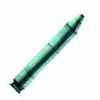 |
Vysota Russian intercontinental ballistic suborbital launch vehicle. Two stage vehicle based on R-29D SLBM. Suborbital; 30-55 min zero G. Payload volume 0.7 cu. m. Payload 115 kg to 5200 km or 1150 kg to 200 km. Liftoff mass 33 metric tons. |
| RT-2P Russian intercontinental ballistic missile. Development of the improved RT-2P version of the basic missile was authorized by decree 1004-365 of 18 December 1968. The overriding concern was imminent deployment by the Americans of the Safeguard anti-ballistic missile system, and the need for the missile to have the necessary countermeasures to defeat those defenses. |
| RT-22 Russian intercontinental ballistic missile. The RT-22 was a follow-on study to the RT-21 for a train-launched solid-propellant ICBM. It reached the stage of an advanced project in 1969. The three stage rocket would have a total mass of 80 metric tons including its transport container. A train would have a total of 22 cars, six of which would be missile launchers. |
| UR-100M Russian intercontinental ballistic missile. The 8K84M was an improved version of the UR-100 with an improved empty mass fraction, a new guidance system, countermeasures capability, and post-boost maneuverability to defeat enemy anti-ballistic missile systems. |
| UR-100U Russian intercontinental ballistic missile. The UR-100U was a development of the UR-100K with improved shock isolation in the silo. |
 |
Dong Feng 5 Development of the DF-5 began in 1964. The goal was an ICBM capable of reaching the United States. Although deployed in very limited numbers as an ICBM, this rocket became the basis for an entire family of space launch vehicles and the foundation of the Chinese space program. |
 |
R-36M 15A14 Ukrainian intercontinental ballistic missile. The R-36M replaced the R-36 in 288 existing silos and was additionally installed in 20 new super-hardened silos. |
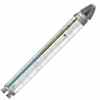 |
MR-UR-100 Ukrainian intercontinental ballistic missile. The Yangel MR-UR-100 was designed as a replacement for Chelomei's UR-100 at the end of its 10 year storage life. Although it could be installed in the same silos, it was 50% heavier. The competing design of Chelomei, the UR-100N, was also put into production when the Soviet hierarchy deadlocked and could not pick one design over the other. |
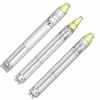 |
UR-100N Russian intercontinental ballistic missile. The UR-100N was designed as a replacement for the UR-100 at the end of its ten year storage life. Although it could be installed in the same silos, it was 50% heavier. The competing design of Yangel, the MR-UR-100, was also put into production when the Soviet hierarchy deadlocked and could not pick one design over the other. |
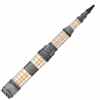 |
Temp-2S Russian intercontinental ballistic missile. World's first operational mobile ICBM. Deployed in great secrecy in 1976-1987 contrary to the terms of the SALT-2 Treaty. |
| R-36 8K67MA Ukrainian intercontinental ballistic missile. |
| R-36 8K67PM Ukrainian intercontinental ballistic missile. |
| RT-2M Russian intercontinental ballistic missile. The RT-2M was a modernized RT-2, developed under Savodskiy at Korolev's bureau beginning in the late 1960's in parallel with the RT-2P and using alternate new engines. This increased both range and payload compared to the RT-20. However the RT-2P was selected for further development. |
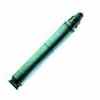 |
Volna Russian launch vehicle based on surplus R-29RL submarine launched ballistic missiles. Suborbital and orbital versions. Payload volume 1.3 cu. M. Payload 115 kg to 3000 km or 1250 kg to 200 km altitude suborbital trajectories, or 120 (260 lb) kg to a 200 km orbit. Liftoff mass 34 metric tons. |
 |
Trident C-4 American intercontinental ballistic missile. 3 stages, inertial guided, warhead: nuclear MIRV. Could replace Poseidon in existing submarine launch tubes. |
| UR-100NU 15A35 Russian intercontinental ballistic missile. Development of an improved version of the UR-100N was authorized on 16 April 1976 (UR-100NU; U = UTTKh = 'Improved Technical-Tactical Characteristics). Viktor Bugaisk at TsKBM headed the engineering team. The UR-100NU was to have a new warhead dispenser bus and improved guidance system by Vladimir Sergeyev of NII-692. The new system allowed up to six pre-programmed targets to be entered, any one of which could be selected at launch. This allowed deployment of better countermeasures and a considerable improvement in accuracy. |
| MR-UR-100U 15A16 Ukrainian intercontinental ballistic missile. Improved version of the MR-UR-100U loaded into the super-hardened 15P715U universal silo, with a modernized guidance system with better reliability and accuracy. |
| R-36MU 15A18 Ukrainian intercontinental ballistic missile. Improved version of the R-36M with a new ten warhead MIRV bus, better guidance system, increased throw-weight, and increased range. |
| Titan 2B American intercontinental ballistic orbital launch vehicle. Space launch version of Titan 2 ICBM, obtained through minimal modification of ICBM (new wiring and avionics only, and use of existing ICBM re-entry vehicle shroud). Proposed in the late 1980's but never developed. |
| Titan 2L American intercontinental ballistic orbital launch vehicle. Version of refurbished Titan 2 ICBM with two liquid propellant strap-on stages. Proposed in the late 1980's but never developed. |
| Titan 2S American intercontinental ballistic orbital launch vehicle. Version of refurbished Titan 2 ICBM with two to eight Castor 4A solid-propellant strap-on stages. Proposed in the late 1980's but never developed. |
 |
Topol' Russian containerized all-solid propellant intercontinental ballistic missile designed for launch from mobile and silo launchers. Replaced UR-100/UR-100NU in silos. |
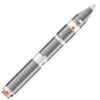 |
RT-23 Ukrainian intercontinental ballistic missile. The only rail-based ICBM ever deployed. Developed by Yuzhnoye in the Ukraine was protracted, but understandable given the huge technical challenges. Twelve years of design and testing was followed by deployment from 1988. All were retired by 2003. |
| RT-23 15Zh44 Ukrainian intercontinental ballistic missile. The draft project for the silo-based RT-23 with the 15F143 warhead was completed in December 1979. Trials of this basic version began at Plesetsk on 26 October 1982. The basic RT-23 was accepted for military service on 10 February 1983, but the decision was taken not to put it into production. All resources were to be devoted to an improved RT-23UTTKh. |
| RT-23U 15Zh60 Ukrainian intercontinental ballistic missile. Design began of the silo-based version of the RT-23UTTKh on 9 August 1983. |
 |
Shtil' Russian intercontinental ballistic orbital launch vehicle. Three stage vehicle based on R-29RM SLBM. |
 |
Peacekeeper American intercontinental ballistic missile. 10 nuclear MIRV warheads. In service 1986-2004. Surplus stages were used as target vehicles for anti-ballistic missile tests. |
| RT-23 15Zh52 Ukrainian intercontinental ballistic missile. A draft project of the 15Zh52 MIRV train-based version of the RT-23 was completed in June 1980. The system was designed to allow the mobile launchers to conduct long-duration deployments up to 200 km from base. |
| RT-23U 15Zh61 Ukrainian intercontinental ballistic missile. A decree of 9 August 1982 ordered development of an improved RT-23UTTKh, dubbed 'Molodets'. Three basing modes were to be possible using a single containerized missile: train-launched, a 'Tselina-2' road-mobile transport, or silo-based. This would be able to deploy up to ten nuclear warheads from a layered circular dispenser. Retired in 2003. |
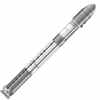 |
R-36M2 15A18M Ukrainian intercontinental ballistic missile. The R-36M2 was the Soviet Union's answer to the American 'Star Wars' anti-ballistic missile system. It was unusually named 'Voevoda' (an old Russian word for the leader of an army) in recognition of its planned role. In the end, it was only deployed in very limited numbers before the end of the Cold War. |
 |
Trident D-5 American intercontinental range, submarine-launched ballistic missile. Deployed March 1990 aboard the new Ohio-class submarines. 336 remain in service in the 2010's as America's seaborne nuclear deterrent. |
| Titan II SLV American intercontinental ballistic orbital launch vehicle. Space launch version, obtained through minimal refurbishment of decommissioned ICBM's. |
 |
SICBM American mobile small intercontinental ballistic missile. Developed 1986-1991, but cancelled as unnecessary at the end of the Cold War. |
| Albatros ICBM Russian intercontinental ballistic missile. Albatros was an ICBM designed by NPO Mashinostroyeniye under Chief Designer Gerbert Yefremov according to a decree of 9 February 1987. Like the Yuzhnoye Universal ICBM, it was to be built in enormous numbers in order to defeat any deployment by America of mass missile defenses under their Strategic Defense Initiative. With the dissolution of the Soviet Union, and the abandonment of SDI by the United States, the missile was cancelled. |
| Ikar Ukrainian intercontinental ballistic missile. Ikar was Yuzhnoye's design for a heavy ICBM, a next-generation replacement for the R-36M2. Design was begun at the beginning of the 1990's under Stanislav Us. It may have used all-solid propellants, and nested rocket stages. Work was quickly dropped after the dissolution of the Soviet Union. |
 |
Koltso ICBM Ukrainian intercontinental ballistic missile. Koltso was a Yuzhnoye advanced ICBM, subject of decrees of 29 September 1976 and 31 May 1984. Development was authorized by the project was cancelled after the collapse of the ICBM. |
| Kopye-R Ukrainian intercontinental ballistic missile. Kopye-R was a Yuzhnoye advanced ICBM, subject of a draft project completed in February 1986. Development was authorized by the project was cancelled after the collapse of the ICBM. |
| RSS-40 Russian intercontinental ballistic missile. SS-18 Replacement. The designation SS-X-26 was originally assigned to the RSS-40, but the number was reused for another missile after its cancellation. |
| Universal Ukrainian intercontinental ballistic missile. Yuzhnoye solid-propellant ICBM designed for mass production to counter US 'Star Wars' program. Two built before break-up of Soviet Union. Some design features incorporated into all-Russian Topol-M. |
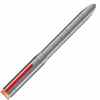 |
Topol'-M All-Russian solid propellant ICBM set to replace all older models in the first decade of the 21st Century. Designed for mobile deployment on 8-axis transport-launcher RT-2M2/SS-X-29), or placement in existing UR-100N and R-36M silos (RT-2M1/SS-X-27). |
| Shtil'-1 Russian intercontinental ballistic orbital launch vehicle. Three stage vehicle based on R-29RM SLBM. |
 |
Dnepr Ukrainian orbital launch vehicle based on decommissioned R-36M2 intercontinental ballistic missiles. |
 |
DF-31 Mobile, solid propellant, land-based, medium range, three-stage ballistic missile. The missile was tested on the ground in 1995. Ejection tests from the transport-launch tube began in 1998. The first flight test took place on 1 August 1999. JL-2 was the submarine-launched version. The KT family of all solid-propellant Chinese launch vehicles, used the DF-31 with new upper or lower stages to achieve a range of payload performances. Following two unsuccessful launches in 2002-2003, the KT project seems to have been abandoned. |
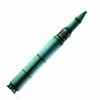 |
Shtil-2/2N Russian intercontinental ballistic orbital launch vehicle. Three stage vehicle based on R-29RM SLBM with a special shroud. Liftoff mass 40 metric tons. Stationary launch platform. |
| 11A513 Russian intercontinental ballistic missile. FOBS version. Warhead accuracy 5 km along orbital track, 3 km to either side. OKB-1 estimated warhead would be detected by Western defenses only two minutes before it detonated. The designation SS-10 was assigned by the DOD to the UR-200, but was commonly and erroneously applied to the GR-1, which was shown publicly after its cancellation. |
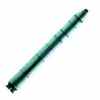 |
Shtil-3A Russian intercontinental ballistic orbital launch vehicle. Proposed four-stage air-launched orbital launch vehicle based on R-29RM SLBM. Ignition mass 46 metric tons. |
| MSBS M5 French intercontinental ballistic missile. |
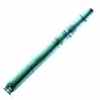 |
Strela launch vehicle Russian launch vehicle by NPO MASH based on UR-100N ICBMs decommissioned from Ukrainian missile fields. 106 metric ton liftoff mass. |
| JL-2 Chinese submarine-launched intercontinental ballistic missile. DF-23, DF-31 were land based versions. |
| Bulava Russian solid-propellant intercontinental ballistic missile, equipped with up to ten multiple independently targeted warheads. The first post-Soviet Russian ballistic missile, it was designed to provide Russia's submarine-launched deterrent by the third decade of the 21st Century. |
| MSBS M51 French intercontinental ballistic missile. |
| RS-24 Russian intercontinental ballistic missile. New mobile, solid-propellant ICBM, heavier than the Topol-M, designed to carry up to ten MIRV warheads and to replace the R-36M2 and UR-100N liquid propellant missiles. |
 |
DF-41 Chinese solid propellant, mobile ICBM. The DF-41 was a longer-range version of the DF-31. |
| Dong Feng 5A Chinese intercontinental ballistic missile. Modernized DF-5 incorporating guidance and propulsion improvements developed for the CZ-series of launch vehicles. |
Back to top of page
Home - Search - Browse - Alphabetic Index: 0- 1- 2- 3- 4- 5- 6- 7- 8- 9
A- B- C- D- E- F- G- H- I- J- K- L- M- N- O- P- Q- R- S- T- U- V- W- X- Y- Z
© 1997-2019 Mark Wade - Contact
© / Conditions for Use
